AUCTORES
Globalize your Research
Research Article | DOI: https://doi.org/10.31579/2690-1919/406
Faculty of Earth Science and Technology, Kim Chaek University of Technology, Pyongyang, Democratic People’s Republic of Korea.
*Corresponding Author: Faculty of Earth Science and Technology, Kim Chaek University of Technology, Pyongyang, Democratic People’s Republic of Korea.
Citation: Song Guk Han, Song C. Kim, (2024), Analysis of Fluid Flow Characteristics for Stress-Sensitivity Dual-Porosity Reservoir considering Elastic Outer Boundary, J Clinical Research and Reports, 17(1); DOI:10.31579/2690-1919/406
Copyright: 2024, Song Chol Kim. This is an open access article distributed under the Creative Commons Attribution License, which permits unrestricted use, distribution, and reproduction in any medium, provided the original work is properly cited.
Received: 12 September 2024 | Accepted: 01 November 2024 | Published: 09 November 2024
Keywords: stress sensitivity; dual-porosity reservoir; well testing; elastic outer boundary
Previous researchers have considered the influence of stress sensitivity and elastic outer boundary on the flow characteristics of fluids in reservoir, and solved the problem by considering stress sensitivity and elastic outer boundary conditions when analyzing the flow characteristics, but the stress sensitivity and elastic outer boundary conditions are not taken into account at the same time, the error still arises in the well test analysis.
In order to simplify the complex problem in solving the model, we obtained analytical solutions in Laplace space by applying inverse transformation and obtained the pressure and pressure derivative curve, and analyzed the sensitivity of the characteristic values for pressure and pressure derivative curve.
In order to simplify the complex problem in solving the model, Pedrosa’s transformation and perturbation’s transformation were applied.
Using these transformations, the nonlinear partial differential equation was linearly transformed. By Laplace transformation, we obtained analytical solutions in Laplace space and applied inverse transformation to obtain solutions in real space, and plotted the pressure and pressure derivative curves.
The model accuracy was verified by comparison with previous studies and sensitivity analysis of the characteristics for pressure and pressure derivative curves was performed.
This study is of great significance in improving the accuracy of the parameters of the well and reservoir determined by well test analysis.
During oil extraction, the permeability of the reservoir changes due to the decrease of the pressure of reservoir and the increase of effective stress. Many researchers have studied reservoir models considering the stress sensitivity and stress sensitivity of reservoir.
Jiang and Yang (2018) presented a complete coupled model of fluid flow and geomechanics characterizing stress-sensitive reservoir in hydraulic fractured coal bed methane reservoirs, and Guo etc. (2015) presented pressure unsteady analysis and flow attenuation analysis for hydraulic fracturing vertical wells with finite conductivity in shale reservoirs considering multi-flow mechanisms including desorption, diffusion, Darcy flow and stress sensitivity.
Zhao etc. (2020), Jabbari etc. (2012) studied the effect of stress sensitivity on analyzing the flow characteristics of fluids in fractured reservoirs, Wang and Wang (2016) proposed that the effect of stress sensitivity on establishing a semi-analytical model considering the sliding effect in fractured gas reservoirs, Huang etc. (2018a) presented an unsteady flow model of horizontal well in stress sensitive composite reservoirs, Li etc. (2017) developed a dual-porosity medium model of horizontal well considering the influence of stress sensitivity.
Aguilera (2008) proposed a material balance equation considering the effective compressibility of the dual-porous medium, Wang etc. (2014; 2017c) and Luo etc. (2021) and Mo etc. (2016) considered the stress sensitivity when establishing a fluid flow model in a fractured reservoirs.
Ren and Guo (2018) studied the general analytical method of unsteady flow rate considering the influence of stress sensitive permeability, Jelmert and Toverud (2017) presented a model of stress sensitive reservoir and their solution based on the outer elastic modulus and plotted the corresponding typical curve.
Li etc. (2020a) proposed a sampling model that considers stress sensitivity based on the combination of fluid flow characteristics and rock mechanics in triple porous media including kerogen, inorganic and fracture networks.
Chen etc. (2021) developed a model considering the threshold pressure gradient, gas slip and stress sensitivity when developing a mathematical model in a dual-porosity gas reservoir, and Xue etc. (2021) conducted a study of a dense sandstone gas reservoir where water is taken together and found that the influence of stress sensitivity in a dense sandstone gas reservoir is strongly influenced.
Lian etc. (2011) and Zhao etc. (2013) studied the stress sensitivity of permeability in the laboratory, Wang etc. (2018), Shu and Yan (2008), Selvadurai etc. (2018), Wang etc. (2018), Wang etc. (2011), Feng etc. (2021), Tian etc. (2015) conducted a laboratory study on the effect of stress sensitivity on the bed gas layer, and Zheng etc. (2015) conducted experiments using nuclear magnetic resonance technique to investigate the relationship between the permeability and its effective stress, and Zhang etc. (2019) proposed the influence of stress sensitivity on a gas reservoir, and Zhang etc. (2019) proposed the influence of stress sensitivity on the system.
Shovkun and Espinoza (2017) considered the flow of fluid taking into account the stress induced by adsorption in the stress-sensitive coal bed methane, and carried out geomechanical simulations considering shear rupture in the coal reservoir and migration of coal dust. Wu etc. (2018c) and Xu etc. (2021) proposed a well test model in a multi-hydraulic fractured horizontal well considering stress sensitivity.
Zhang etc. (2010) developed an analytical well test model considering stress sensitivity to several factors in a low permeability reservoir, and Wang etc. (2017a) considered the effect of stress sensitivity on horizontal well test analysis in a multi-view low permeability natural fracture reservoirs.
Wu etc. (2018b) and Ji etc. (2017), Huang etc. (2018b) considered stress sensitivity in a dense reservoir, Wu etc. (2018a) proposed a multi-hydraulic fractured horizontal well test model considering stress sensitivity in a dense gas reservoir, Wang etc. (2020), Liu etc. (2015), Du etc. (2020), proposed a mathematical model considering stress sensitivity in a vertical well of a hydraulic fractured coal reservoir, Chen etc. (2016), Wang etc. (2021) proposed a numerical model considering stress sensitivity in a vertical well of a hydraulic fractured coal reservoir , and Wang etc. (2021) conducted a study.
Cao etc. (2021) and Yan etc. (2021) conducted an unsteady filtration study considering the effect of sand extraction on filtration and stress sensitivity in a well where sand is taken together.
Zhang and Tong (2008) investigated the unsteady pressure response of the purge medium in stress-sensitive reservoirs.
Gao etc. (2021) proposed a well-testing model considering stress sensitivity when performing pressure recovery tests in a high-pressure complex gas reservoir at the depth.
So far, as all idealized outer boundaries related to the stress sensitivity considered by the authors are considered, it is considered that there is no strictly idealized boundary in the reservoirs, and is extremely rare, therefore, considering the external boundary as idealized boundaries, the reservoir cannot be objectively described and the error can be avoided in the analysis.
Several researchers have investigated the flow characteristics in reservoir by considering the elastic outer boundary.
Li etc. (2019a) considered the outer boundary as an elastic boundary in the filtration modeling of homogeneous reservoir, Li etc. (2020b) modeled the extended Bessel equation by introducing elastic boundary value condition, proposed the elastic boundary value problem, and proposed the filtering model of the loose homogeneous reservoir under elastic outer boundary condition, Kim etc. (2021a) considered the outer boundary condition as an elastic boundary condition, introduced the effective borehole radius, and introduced the effective borehole radius, and Zheng etc. (2021) developed a dual-medium filtration model of the shale gas reservoir with elastic outer boundary considering the adsorption and desorption process.
In the analysis of fluid flow characteristics in reservoir, both stress sensitivity and elastic outer boundary conditions have a significant effect, but previous studies have not considered this simultaneously.
In this paper, a well test analysis model of a dual-porosity reservoir considering stress sensitivity and elastic outer boundary conditions simultaneously is developed and the solution is obtained.
EOB condition
Li et al. (2019a) defined an elastic coefficient of reservoir as follows:

As shown in Figure.1, the farther the distance from a well is, the lower the pressure difference is. Thus, the change direction of pressure difference is opposite to the change direction of the position.

Figure 1: Distribution of pressure in reservoir versus radius, r
Therefore, the elastic coefficient of outer boundary in a cylinder reservoir can be defined as follows (Kim et al., 2021a):.
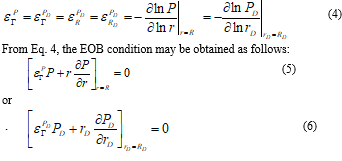
Eq. 5 or 6 is an elastic outer condition.
Methodology
Physical model
1) Reservoir consists of the natural fracture and matrix, the fluid flows through the nature fracture. That is, the reservoir a dual-porosity and a single permeability reservoir.
2) It is a natural fractured reservoir considering stress sensitivity in permeability.
3) The reservoir has a constant thickness h.
4) The fluid flow is assumed to be isotropic and a single phase.
5) The effects of the gravity and capillary are neglected.
Mathematical model
SSP
In order to describe the degree of the SSP of reservoir and its influence, Pedrosa (1986) introduced the concept of a permeability modulus g for the low-permeability homogenous reservoir. As the reservoir pressure decreases, the opening of natural fracture decreases. Therefore, the permeability of the natural fracture also decreases.
The permeability modulus is defined as follows:
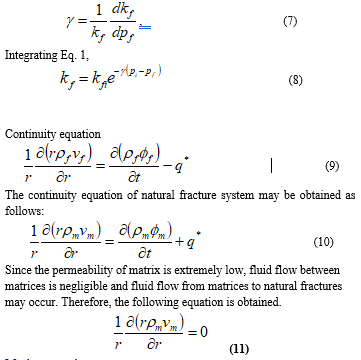
Motion equation
It is assumed that the fluid flow in natural fracture system obeys Darcy's law. The following equation may be obtained, which shows the fluid flow in natural fracture.
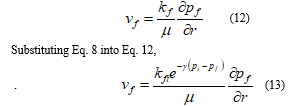
State equation
To describe the changes of oil density in the natural fracture and matrix during production of oil, the following equations are applied, respectively.

To describe the changes of porosity of the natural fracture and matrix during production of oil, the following equations are applied, respectively.

Interporosity flow equation between matrix and fracture
It is assumed that the interporosity flow is pseudo-steady state. Then, the following equation should be satisfied (Warren and Root, 1963):

Seepage differential equation
In order to obtain a seepage differential equation for matrix system, Eqs. 15, 17 and 18 are substituted into Eq. 10.

Eq. 19 is a seepage differential equation for the matrix system in the low-permeability natural fracture reservoir.
In order to obtain a seepage differential equation for natural fracture system, Eqs. 13, 14, 16 and 18 are substituted into 9.

Equation 21 is a seepage differential equation for the natural fracture system considering the SSP in the low-permeability natural fracture reservoir.
Initial and boundary conditions
The reservoir has the uniform pressure. Therefore, initial condition is as follows.
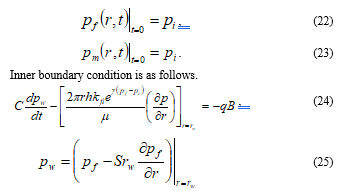
Considering the outer boundary as the elastic boundary, outer boundary condition can be obtained as follows.

For convenience, the following dimensionless variables are defined. Dimensionless pressure
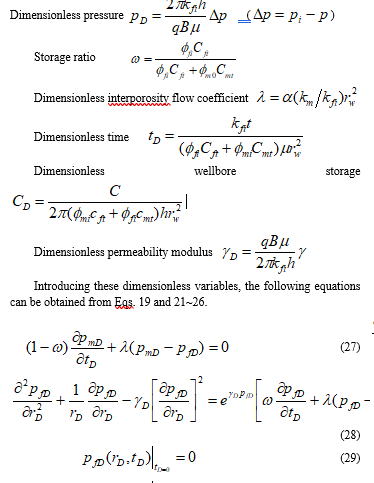


The seepage differential equation, Eq. 35 for fracture system and inner boundary condition, Eq. 37 have strong nonlinearity. Therefore, to linearize these equations, Pedrosa ’s transformation and perturbation transformation are applied
Pedrosa ’s transformation is as follows (Pedrosa, 1986):
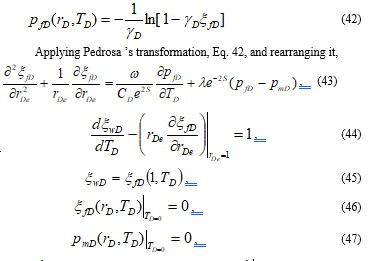

Perturbation transformation
The perturbation transformation is as follows (Pedrosa, 1986):
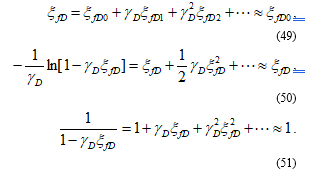
As the value of  is small, the solution of zero-order perturbation can satisfy the accuracy requirement.
is small, the solution of zero-order perturbation can satisfy the accuracy requirement.

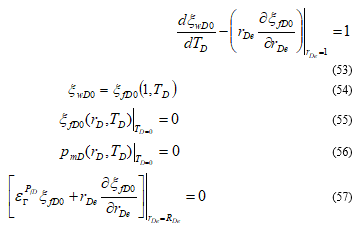
Laplace transformation
The Laplace transformation of Eqs. 36 and 52~57 is taken with respect to TD.
The Laplace transformation is defined as follows:

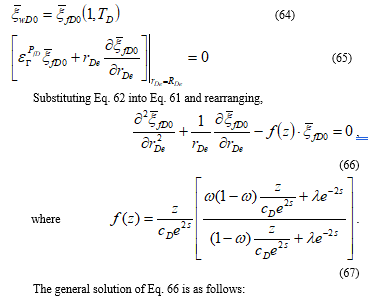
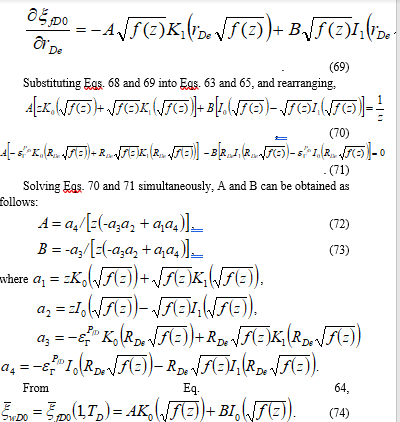
When  the values of 0th and 1st order Bessel functions of the first kind converge to infinity. Therefore, these values cannot be calculated by using computer. In order to avoid this, the following asymptotic formula is used.
the values of 0th and 1st order Bessel functions of the first kind converge to infinity. Therefore, these values cannot be calculated by using computer. In order to avoid this, the following asymptotic formula is used.
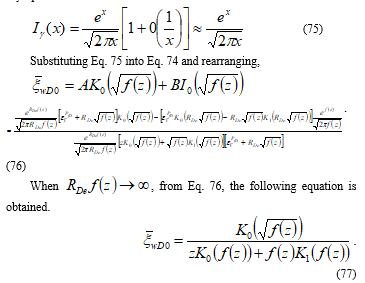
 is obtained by numerically inverting Laplace transformation, Eqs. 76 and 77. In order to numerically invert Laplace transformation, the algorithm by Kim et al. (2021b) is used, where n=25, a=6.5, k=2, σ=0.
is obtained by numerically inverting Laplace transformation, Eqs. 76 and 77. In order to numerically invert Laplace transformation, the algorithm by Kim et al. (2021b) is used, where n=25, a=6.5, k=2, σ=0.
Pressure is calculated with Eq. 42 and pressure derivative with the following equation.

Verification of model
Comparison verification
To verify our model, this is compared to the model for the DPR with EOB without consideration of the stress sensitivity. When stress sensitivity is not considered in this model, as there is permeability modulus in denominator of Eq. 42 and it converges into infinity, (here). Other parameters are as follows: RDe=2000,. Figure.2 shows the result of comparison of two models. The solid lines represent our model and circle mark the dual-porosity without consideration of stress sensitivity (Kim et al., 2021a). From Figure.2, it can be seen that two models agree well, which shows that our model is valid.
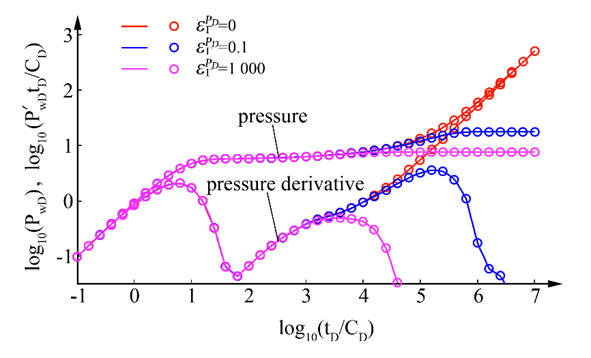
Figure 2: Result of comparison of our model to the model without consideration of stress sensitivity
Analysis of Sensitivity
Effect of permeability modulus on the PPD curves
Figure.3 shows the effect of the permeability modulus (=0.001, 0.1, 0.2, 0.3) on the PPD curves. Other parameters are as follows: CDe2S=100, ,
l=10-3, w=10-5, RDe=2 000. As shown in Figure.3, the larger value of, the higher PPD curves. As time increase, the effect of the permeability modulus on PPD curves increases. When, horizontal line of value 0.5 does not appear in the middle stage of pressure derivative curve. This means that the SSP affects analysis of the well-testing data.

Figure 3. Effect of gamma on the PPD curves
Effect of elastic coefficient of outer boundary on the PPD curves
According to Li et al. (2019a), reflects the closed boundary, the constant pressure boundary, the infinite boundary and between closed boundary and constant pressure boundary.
Figure.4 shows the effect of elastic coefficient (=0, 0.1, 1, 1000) of outer boundary on the PPD curves. Other parameters are as follows: CDe2S=100, l=10-3, w=10-5, RDe=2 000. As shown in Figure.5, does not affect the early and middle stages of the pressure derivative curves, but affects the late stage of the pressure derivative curves. When
the value of is zero, it reflects the closed boundary. While, when the value of is 1 000, it reflects that is close to the closed boundary. Moreover, when, it reflects the infinite boundary. This means that with the value of, the middle stage of PPD curves are between closed boundary and constant pressure boundary. However, the outer boundary condition between closed boundary and constant pressure boundary has not been considered at the model of reservoir with the ideal outer boundary (infinite boundary, closed boundary and constant pressure boundary). Thus, our model has generality in comparison to the model with ideal outer boundary. Therefore, this means that the accuracy of well-testing analysis can be enhanced. 
Figure.4. Effect of elastic coefficient of outer boundary on the PPD curves
Effect of CDe2S on the PPD curves
CDe2S is a dimensionless quantity, which considers wellbore storage and skin simultaneously, and shows degrees of improvement or damage of well.
Figure.5 shows the effect of CDe2S (CDe2S=1000, 2 000, 5 000, 10 000) on the PPD curves. Other parameters are as follows:, =0.01, , l=10-5, w=10-5, RDe=2 000. CDe2S affects the middle stage of pressure curve. The lager the value of CDe2S increases, the upper the pressure derivative curves are in the middle stage and the earlier the effect of boundary appears on the pressure derivative curves.

Figure 5: Effect of CDe2S on the PPD curves
Effect of skin S on the PPD curves
Figure.6 shows the effect of skin S (S=-3, -1, 0, 1, 3) on the PPD curves. Other parameters are as follows: =0.01, l=10-3, w=10-4, CDe2S=10, RD=5 000. Skin S affects the middle and late stages of the PPD. The
smaller value of S decreases, the upper the PPD curves are, the higher “hump” of the pressure derivative curve gets, and the later it appears.
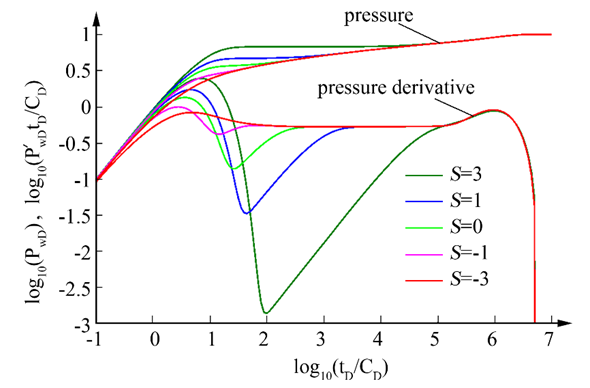
Figure 6: Effect of skin S on the PPD curves
Effect of dimensionless radius RD on the PPD curves
Figure.7 shows effect of dimensionless radius RD (RD =100, 1 000, 5 000, 10 000) on the PPD curves. Other parameters are as follows: =0.01,
, l=10-3, w=10-5, CDe2S=1 000,. RD affects only the late stage of the PPD curves. The larger the value of RD increases, the later the effect of boundary appear
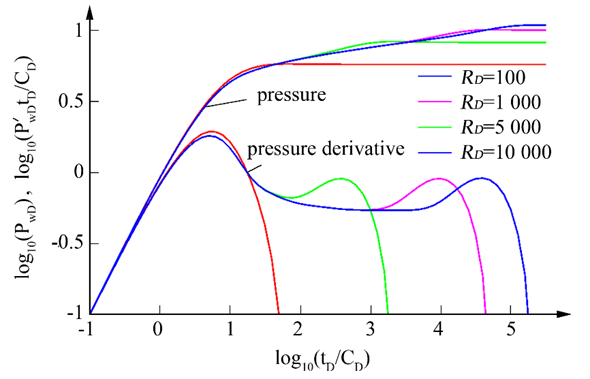
Figure 7: Effect of dimensionless radius RD on the PPD curves
Effect of inter-porosity flow coefficient on the PPD curves
Figure.8 shows effect of inter-porosity flow coefficient (=10-2, 10-3, 10-4) on the PPD curves. Other parameters are as follows: =0.01, w=10-4, CDe2S=10, RD=5 000. The inter-porosity flow coefficient affects the middle stage of the PPD curves. The larger the value of increases, the upper the PPD curves are, the higher “hump” of the pressure derivative curve gets, the deeper the concave of the pressure derivative curve are and the later the concave appears
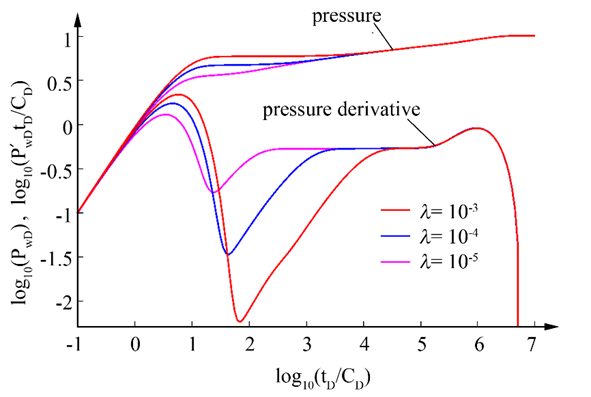
Figure 8: Effect of inter-porosity flow coefficient  on the PPD curves
on the PPD curves
Effect of storage ratio on the PPD curves
Figure.9 shows effect of storage ratio (=10-1, 10-2, 10-3, 10-4) on the PPD curves. Other parameters are as follows: =0.01, =10-4, CDe2S=10, , RD=5 000. affects both the early and middle period of flow. The smaller
the upper the pressure curves are, the higher “hump” of the pressure derivative curve gets, the deeper the concave are and the earlier the concave appears
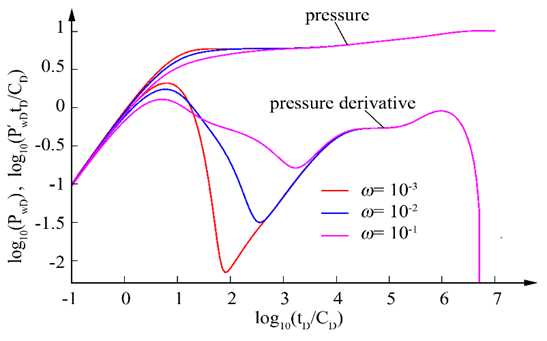
Figure 9: Effect of storage ratio on the PPD curves
Both the SSP and the condition of elasticity of the outer boundary greatly affect the well-testing analysis, but the previous papers have considered these effects individually and have not considered simultaneously, which may result in the considerable errors in the well-testing analysis. The well-testing model proposed in our paper considers the effect of the SSP and the condition of elasticity of the outer boundary simultaneously. Thus, this model may improve the accuracy of the well-testing analysis for the DPR.
There are also several models including the triple-porosity model. However, this model is limited to the dual-porosity model for vertical well. We are going to study the triple-porosity dual-permeability model for horizontal and inclined well considering EOB.
Based on the consideration of stress sensitivity and elastic outer boundary conditions, we first formulated the seepage differential equation in the dual-porosity reservoir considering wellbore storage and skin factor, and defined the dimensionless variable to facilitate the derivation of the solution.
This mathematical model is strong nonlinear, the Pedrosa’ s transformation is applied.
However, after the transformation of Pedrosa is applied, the mathematical model is still nonlinear, So the perturbation transformation is performed to eliminate the nonlinearity of the model, and then the Laplace transformation is performed to obtain the analytical solution of the well test model in the dual-porosity reservoir considering elastic outer boundary and stress sensitivity in the Laplace space, and the Laplace numerical inversion (Kim etc., 2021b) is applied to obtain the dimensionless pressure and pressure derivative model curve in the wellbore.
To verify the accuracy of the model, we verified that the model is valid compared with the dual-porosity reservoir model (Kim etc., 2021a) with the elastic boundary without considering stress sensitivity, we performed a parametric sensitivity analysis on the pressure and pressure derivative curve and showed that the elastic outer boundary and stress sensitivity affect the well- test data analysis.
The model presented in this paper can improve the accuracy of well-test data analysis compared to the well test model in the previous dual-porosity reservoir.
B-Volume factor, dimensionless
C- wellbore storage coefficient, m3/Pa
CD-Dimensionless wellbore storage, dimensionless
Cm, Cf-Compressibility of matrix system and natural fracture system, respectively, Pa-1
Cmt-Total compressibility of matrix system and oil, Pa-1
Cft-Total compressibility of natural fracture system and oil, Pa-1
Co-Oil compressibility, Pa-1
km, kf-Permeability of matrix system and natural fracture system, respectively, m2
kfi-Permeability of natural fracture under initial condition, m2
h- Reservoir thickness, m
p-Reservoir pressure, Pa
R- outer boundary radius, m
RD- dimensionless outer boundary radius, dimensionless
pm, pf-Pressure in matrix system and natural fracture system, respectively, Pa
pi-Initial reservoir pressure, Pa
pw-Wellbore pressure, Pa
q-Well rate, m3/s
q*-Mass flow velocity between matrix system and fracture system in the reservoir of unit volume, kg/(m3s)
r-Radius, m rw-Well radius, m
S- skin, dimensionless
t-Time, s
tD-Dimensionless time, dimensionless
z-Laplace variable, dimensionless
-Shape factor between matrix and fracture, m-2
-Oil density at pressure pm in the matrix system and at pressure pf in natural fracture system, respectively, kg/m3
-Oil density under initial condition, kg/m3
- Permeability modulus, Pa-1
-Dimensionless permeability modulus, dimensionless
-Dimensionless inter-porosity flow coefficient, dimensionless
- Storage ratio, dimensionless
-Viscosity of oil, Pa∙s.
-Porosity of matrix system and natural fracture system, respectively, fraction
-Porosity of matrix system and natural fracture system under initial condition, respectively, fraction
-Flow velocity of fluid in matrix system and natural fracture system, respectively, m/s
Superscripts
- Laplace transformation
Subscripts
D-Dimensionless
m-Matrix
f-Fracture
w-Well
We gratefully acknowledge all professors of Petroleum Institute, Faculty of Geoscience and Technology, Kim Chaek University of Technology for her valuable suggestions and discussions.
Clearly Auctoresonline and particularly Psychology and Mental Health Care Journal is dedicated to improving health care services for individuals and populations. The editorial boards' ability to efficiently recognize and share the global importance of health literacy with a variety of stakeholders. Auctoresonline publishing platform can be used to facilitate of optimal client-based services and should be added to health care professionals' repertoire of evidence-based health care resources.

Journal of Clinical Cardiology and Cardiovascular Intervention The submission and review process was adequate. However I think that the publication total value should have been enlightened in early fases. Thank you for all.

Journal of Women Health Care and Issues By the present mail, I want to say thank to you and tour colleagues for facilitating my published article. Specially thank you for the peer review process, support from the editorial office. I appreciate positively the quality of your journal.
Journal of Clinical Research and Reports I would be very delighted to submit my testimonial regarding the reviewer board and the editorial office. The reviewer board were accurate and helpful regarding any modifications for my manuscript. And the editorial office were very helpful and supportive in contacting and monitoring with any update and offering help. It was my pleasure to contribute with your promising Journal and I am looking forward for more collaboration.

We would like to thank the Journal of Thoracic Disease and Cardiothoracic Surgery because of the services they provided us for our articles. The peer-review process was done in a very excellent time manner, and the opinions of the reviewers helped us to improve our manuscript further. The editorial office had an outstanding correspondence with us and guided us in many ways. During a hard time of the pandemic that is affecting every one of us tremendously, the editorial office helped us make everything easier for publishing scientific work. Hope for a more scientific relationship with your Journal.

The peer-review process which consisted high quality queries on the paper. I did answer six reviewers’ questions and comments before the paper was accepted. The support from the editorial office is excellent.

Journal of Neuroscience and Neurological Surgery. I had the experience of publishing a research article recently. The whole process was simple from submission to publication. The reviewers made specific and valuable recommendations and corrections that improved the quality of my publication. I strongly recommend this Journal.

Dr. Katarzyna Byczkowska My testimonial covering: "The peer review process is quick and effective. The support from the editorial office is very professional and friendly. Quality of the Clinical Cardiology and Cardiovascular Interventions is scientific and publishes ground-breaking research on cardiology that is useful for other professionals in the field.

Thank you most sincerely, with regard to the support you have given in relation to the reviewing process and the processing of my article entitled "Large Cell Neuroendocrine Carcinoma of The Prostate Gland: A Review and Update" for publication in your esteemed Journal, Journal of Cancer Research and Cellular Therapeutics". The editorial team has been very supportive.

Testimony of Journal of Clinical Otorhinolaryngology: work with your Reviews has been a educational and constructive experience. The editorial office were very helpful and supportive. It was a pleasure to contribute to your Journal.

Dr. Bernard Terkimbi Utoo, I am happy to publish my scientific work in Journal of Women Health Care and Issues (JWHCI). The manuscript submission was seamless and peer review process was top notch. I was amazed that 4 reviewers worked on the manuscript which made it a highly technical, standard and excellent quality paper. I appreciate the format and consideration for the APC as well as the speed of publication. It is my pleasure to continue with this scientific relationship with the esteem JWHCI.

This is an acknowledgment for peer reviewers, editorial board of Journal of Clinical Research and Reports. They show a lot of consideration for us as publishers for our research article “Evaluation of the different factors associated with side effects of COVID-19 vaccination on medical students, Mutah university, Al-Karak, Jordan”, in a very professional and easy way. This journal is one of outstanding medical journal.
Dear Hao Jiang, to Journal of Nutrition and Food Processing We greatly appreciate the efficient, professional and rapid processing of our paper by your team. If there is anything else we should do, please do not hesitate to let us know. On behalf of my co-authors, we would like to express our great appreciation to editor and reviewers.

As an author who has recently published in the journal "Brain and Neurological Disorders". I am delighted to provide a testimonial on the peer review process, editorial office support, and the overall quality of the journal. The peer review process at Brain and Neurological Disorders is rigorous and meticulous, ensuring that only high-quality, evidence-based research is published. The reviewers are experts in their fields, and their comments and suggestions were constructive and helped improve the quality of my manuscript. The review process was timely and efficient, with clear communication from the editorial office at each stage. The support from the editorial office was exceptional throughout the entire process. The editorial staff was responsive, professional, and always willing to help. They provided valuable guidance on formatting, structure, and ethical considerations, making the submission process seamless. Moreover, they kept me informed about the status of my manuscript and provided timely updates, which made the process less stressful. The journal Brain and Neurological Disorders is of the highest quality, with a strong focus on publishing cutting-edge research in the field of neurology. The articles published in this journal are well-researched, rigorously peer-reviewed, and written by experts in the field. The journal maintains high standards, ensuring that readers are provided with the most up-to-date and reliable information on brain and neurological disorders. In conclusion, I had a wonderful experience publishing in Brain and Neurological Disorders. The peer review process was thorough, the editorial office provided exceptional support, and the journal's quality is second to none. I would highly recommend this journal to any researcher working in the field of neurology and brain disorders.

Dear Agrippa Hilda, Journal of Neuroscience and Neurological Surgery, Editorial Coordinator, I trust this message finds you well. I want to extend my appreciation for considering my article for publication in your esteemed journal. I am pleased to provide a testimonial regarding the peer review process and the support received from your editorial office. The peer review process for my paper was carried out in a highly professional and thorough manner. The feedback and comments provided by the authors were constructive and very useful in improving the quality of the manuscript. This rigorous assessment process undoubtedly contributes to the high standards maintained by your journal.

International Journal of Clinical Case Reports and Reviews. I strongly recommend to consider submitting your work to this high-quality journal. The support and availability of the Editorial staff is outstanding and the review process was both efficient and rigorous.

Thank you very much for publishing my Research Article titled “Comparing Treatment Outcome Of Allergic Rhinitis Patients After Using Fluticasone Nasal Spray And Nasal Douching" in the Journal of Clinical Otorhinolaryngology. As Medical Professionals we are immensely benefited from study of various informative Articles and Papers published in this high quality Journal. I look forward to enriching my knowledge by regular study of the Journal and contribute my future work in the field of ENT through the Journal for use by the medical fraternity. The support from the Editorial office was excellent and very prompt. I also welcome the comments received from the readers of my Research Article.

Dear Erica Kelsey, Editorial Coordinator of Cancer Research and Cellular Therapeutics Our team is very satisfied with the processing of our paper by your journal. That was fast, efficient, rigorous, but without unnecessary complications. We appreciated the very short time between the submission of the paper and its publication on line on your site.

I am very glad to say that the peer review process is very successful and fast and support from the Editorial Office. Therefore, I would like to continue our scientific relationship for a long time. And I especially thank you for your kindly attention towards my article. Have a good day!

"We recently published an article entitled “Influence of beta-Cyclodextrins upon the Degradation of Carbofuran Derivatives under Alkaline Conditions" in the Journal of “Pesticides and Biofertilizers” to show that the cyclodextrins protect the carbamates increasing their half-life time in the presence of basic conditions This will be very helpful to understand carbofuran behaviour in the analytical, agro-environmental and food areas. We greatly appreciated the interaction with the editor and the editorial team; we were particularly well accompanied during the course of the revision process, since all various steps towards publication were short and without delay".

I would like to express my gratitude towards you process of article review and submission. I found this to be very fair and expedient. Your follow up has been excellent. I have many publications in national and international journal and your process has been one of the best so far. Keep up the great work.

We are grateful for this opportunity to provide a glowing recommendation to the Journal of Psychiatry and Psychotherapy. We found that the editorial team were very supportive, helpful, kept us abreast of timelines and over all very professional in nature. The peer review process was rigorous, efficient and constructive that really enhanced our article submission. The experience with this journal remains one of our best ever and we look forward to providing future submissions in the near future.

I am very pleased to serve as EBM of the journal, I hope many years of my experience in stem cells can help the journal from one way or another. As we know, stem cells hold great potential for regenerative medicine, which are mostly used to promote the repair response of diseased, dysfunctional or injured tissue using stem cells or their derivatives. I think Stem Cell Research and Therapeutics International is a great platform to publish and share the understanding towards the biology and translational or clinical application of stem cells.

I would like to give my testimony in the support I have got by the peer review process and to support the editorial office where they were of asset to support young author like me to be encouraged to publish their work in your respected journal and globalize and share knowledge across the globe. I really give my great gratitude to your journal and the peer review including the editorial office.

I am delighted to publish our manuscript entitled "A Perspective on Cocaine Induced Stroke - Its Mechanisms and Management" in the Journal of Neuroscience and Neurological Surgery. The peer review process, support from the editorial office, and quality of the journal are excellent. The manuscripts published are of high quality and of excellent scientific value. I recommend this journal very much to colleagues.

Dr.Tania Muñoz, My experience as researcher and author of a review article in The Journal Clinical Cardiology and Interventions has been very enriching and stimulating. The editorial team is excellent, performs its work with absolute responsibility and delivery. They are proactive, dynamic and receptive to all proposals. Supporting at all times the vast universe of authors who choose them as an option for publication. The team of review specialists, members of the editorial board, are brilliant professionals, with remarkable performance in medical research and scientific methodology. Together they form a frontline team that consolidates the JCCI as a magnificent option for the publication and review of high-level medical articles and broad collective interest. I am honored to be able to share my review article and open to receive all your comments.

“The peer review process of JPMHC is quick and effective. Authors are benefited by good and professional reviewers with huge experience in the field of psychology and mental health. The support from the editorial office is very professional. People to contact to are friendly and happy to help and assist any query authors might have. Quality of the Journal is scientific and publishes ground-breaking research on mental health that is useful for other professionals in the field”.

Dear editorial department: On behalf of our team, I hereby certify the reliability and superiority of the International Journal of Clinical Case Reports and Reviews in the peer review process, editorial support, and journal quality. Firstly, the peer review process of the International Journal of Clinical Case Reports and Reviews is rigorous, fair, transparent, fast, and of high quality. The editorial department invites experts from relevant fields as anonymous reviewers to review all submitted manuscripts. These experts have rich academic backgrounds and experience, and can accurately evaluate the academic quality, originality, and suitability of manuscripts. The editorial department is committed to ensuring the rigor of the peer review process, while also making every effort to ensure a fast review cycle to meet the needs of authors and the academic community. Secondly, the editorial team of the International Journal of Clinical Case Reports and Reviews is composed of a group of senior scholars and professionals with rich experience and professional knowledge in related fields. The editorial department is committed to assisting authors in improving their manuscripts, ensuring their academic accuracy, clarity, and completeness. Editors actively collaborate with authors, providing useful suggestions and feedback to promote the improvement and development of the manuscript. We believe that the support of the editorial department is one of the key factors in ensuring the quality of the journal. Finally, the International Journal of Clinical Case Reports and Reviews is renowned for its high- quality articles and strict academic standards. The editorial department is committed to publishing innovative and academically valuable research results to promote the development and progress of related fields. The International Journal of Clinical Case Reports and Reviews is reasonably priced and ensures excellent service and quality ratio, allowing authors to obtain high-level academic publishing opportunities in an affordable manner. I hereby solemnly declare that the International Journal of Clinical Case Reports and Reviews has a high level of credibility and superiority in terms of peer review process, editorial support, reasonable fees, and journal quality. Sincerely, Rui Tao.

Clinical Cardiology and Cardiovascular Interventions I testity the covering of the peer review process, support from the editorial office, and quality of the journal.

Clinical Cardiology and Cardiovascular Interventions, we deeply appreciate the interest shown in our work and its publication. It has been a true pleasure to collaborate with you. The peer review process, as well as the support provided by the editorial office, have been exceptional, and the quality of the journal is very high, which was a determining factor in our decision to publish with you.
The peer reviewers process is quick and effective, the supports from editorial office is excellent, the quality of journal is high. I would like to collabroate with Internatioanl journal of Clinical Case Reports and Reviews journal clinically in the future time.

Clinical Cardiology and Cardiovascular Interventions, I would like to express my sincerest gratitude for the trust placed in our team for the publication in your journal. It has been a true pleasure to collaborate with you on this project. I am pleased to inform you that both the peer review process and the attention from the editorial coordination have been excellent. Your team has worked with dedication and professionalism to ensure that your publication meets the highest standards of quality. We are confident that this collaboration will result in mutual success, and we are eager to see the fruits of this shared effort.

Dear Dr. Jessica Magne, Editorial Coordinator 0f Clinical Cardiology and Cardiovascular Interventions, I hope this message finds you well. I want to express my utmost gratitude for your excellent work and for the dedication and speed in the publication process of my article titled "Navigating Innovation: Qualitative Insights on Using Technology for Health Education in Acute Coronary Syndrome Patients." I am very satisfied with the peer review process, the support from the editorial office, and the quality of the journal. I hope we can maintain our scientific relationship in the long term.
Dear Monica Gissare, - Editorial Coordinator of Nutrition and Food Processing. ¨My testimony with you is truly professional, with a positive response regarding the follow-up of the article and its review, you took into account my qualities and the importance of the topic¨.

Dear Dr. Jessica Magne, Editorial Coordinator 0f Clinical Cardiology and Cardiovascular Interventions, The review process for the article “The Handling of Anti-aggregants and Anticoagulants in the Oncologic Heart Patient Submitted to Surgery” was extremely rigorous and detailed. From the initial submission to the final acceptance, the editorial team at the “Journal of Clinical Cardiology and Cardiovascular Interventions” demonstrated a high level of professionalism and dedication. The reviewers provided constructive and detailed feedback, which was essential for improving the quality of our work. Communication was always clear and efficient, ensuring that all our questions were promptly addressed. The quality of the “Journal of Clinical Cardiology and Cardiovascular Interventions” is undeniable. It is a peer-reviewed, open-access publication dedicated exclusively to disseminating high-quality research in the field of clinical cardiology and cardiovascular interventions. The journal's impact factor is currently under evaluation, and it is indexed in reputable databases, which further reinforces its credibility and relevance in the scientific field. I highly recommend this journal to researchers looking for a reputable platform to publish their studies.

Dear Editorial Coordinator of the Journal of Nutrition and Food Processing! "I would like to thank the Journal of Nutrition and Food Processing for including and publishing my article. The peer review process was very quick, movement and precise. The Editorial Board has done an extremely conscientious job with much help, valuable comments and advices. I find the journal very valuable from a professional point of view, thank you very much for allowing me to be part of it and I would like to participate in the future!”

Dealing with The Journal of Neurology and Neurological Surgery was very smooth and comprehensive. The office staff took time to address my needs and the response from editors and the office was prompt and fair. I certainly hope to publish with this journal again.Their professionalism is apparent and more than satisfactory. Susan Weiner

My Testimonial Covering as fellowing: Lin-Show Chin. The peer reviewers process is quick and effective, the supports from editorial office is excellent, the quality of journal is high. I would like to collabroate with Internatioanl journal of Clinical Case Reports and Reviews.

My experience publishing in Psychology and Mental Health Care was exceptional. The peer review process was rigorous and constructive, with reviewers providing valuable insights that helped enhance the quality of our work. The editorial team was highly supportive and responsive, making the submission process smooth and efficient. The journal's commitment to high standards and academic rigor makes it a respected platform for quality research. I am grateful for the opportunity to publish in such a reputable journal.
My experience publishing in International Journal of Clinical Case Reports and Reviews was exceptional. I Come forth to Provide a Testimonial Covering the Peer Review Process and the editorial office for the Professional and Impartial Evaluation of the Manuscript.

I would like to offer my testimony in the support. I have received through the peer review process and support the editorial office where they are to support young authors like me, encourage them to publish their work in your esteemed journals, and globalize and share knowledge globally. I really appreciate your journal, peer review, and editorial office.
Dear Agrippa Hilda- Editorial Coordinator of Journal of Neuroscience and Neurological Surgery, "The peer review process was very quick and of high quality, which can also be seen in the articles in the journal. The collaboration with the editorial office was very good."

I would like to express my sincere gratitude for the support and efficiency provided by the editorial office throughout the publication process of my article, “Delayed Vulvar Metastases from Rectal Carcinoma: A Case Report.” I greatly appreciate the assistance and guidance I received from your team, which made the entire process smooth and efficient. The peer review process was thorough and constructive, contributing to the overall quality of the final article. I am very grateful for the high level of professionalism and commitment shown by the editorial staff, and I look forward to maintaining a long-term collaboration with the International Journal of Clinical Case Reports and Reviews.
To Dear Erin Aust, I would like to express my heartfelt appreciation for the opportunity to have my work published in this esteemed journal. The entire publication process was smooth and well-organized, and I am extremely satisfied with the final result. The Editorial Team demonstrated the utmost professionalism, providing prompt and insightful feedback throughout the review process. Their clear communication and constructive suggestions were invaluable in enhancing my manuscript, and their meticulous attention to detail and dedication to quality are truly commendable. Additionally, the support from the Editorial Office was exceptional. From the initial submission to the final publication, I was guided through every step of the process with great care and professionalism. The team's responsiveness and assistance made the entire experience both easy and stress-free. I am also deeply impressed by the quality and reputation of the journal. It is an honor to have my research featured in such a respected publication, and I am confident that it will make a meaningful contribution to the field.

"I am grateful for the opportunity of contributing to [International Journal of Clinical Case Reports and Reviews] and for the rigorous review process that enhances the quality of research published in your esteemed journal. I sincerely appreciate the time and effort of your team who have dedicatedly helped me in improvising changes and modifying my manuscript. The insightful comments and constructive feedback provided have been invaluable in refining and strengthening my work".

I thank the ‘Journal of Clinical Research and Reports’ for accepting this article for publication. This is a rigorously peer reviewed journal which is on all major global scientific data bases. I note the review process was prompt, thorough and professionally critical. It gave us an insight into a number of important scientific/statistical issues. The review prompted us to review the relevant literature again and look at the limitations of the study. The peer reviewers were open, clear in the instructions and the editorial team was very prompt in their communication. This journal certainly publishes quality research articles. I would recommend the journal for any future publications.

Dear Jessica Magne, with gratitude for the joint work. Fast process of receiving and processing the submitted scientific materials in “Clinical Cardiology and Cardiovascular Interventions”. High level of competence of the editors with clear and correct recommendations and ideas for enriching the article.

We found the peer review process quick and positive in its input. The support from the editorial officer has been very agile, always with the intention of improving the article and taking into account our subsequent corrections.

My article, titled 'No Way Out of the Smartphone Epidemic Without Considering the Insights of Brain Research,' has been republished in the International Journal of Clinical Case Reports and Reviews. The review process was seamless and professional, with the editors being both friendly and supportive. I am deeply grateful for their efforts.
To Dear Erin Aust – Editorial Coordinator of Journal of General Medicine and Clinical Practice! I declare that I am absolutely satisfied with your work carried out with great competence in following the manuscript during the various stages from its receipt, during the revision process to the final acceptance for publication. Thank Prof. Elvira Farina

Dear Jessica, and the super professional team of the ‘Clinical Cardiology and Cardiovascular Interventions’ I am sincerely grateful to the coordinated work of the journal team for the no problem with the submission of my manuscript: “Cardiometabolic Disorders in A Pregnant Woman with Severe Preeclampsia on the Background of Morbid Obesity (Case Report).” The review process by 5 experts was fast, and the comments were professional, which made it more specific and academic, and the process of publication and presentation of the article was excellent. I recommend that my colleagues publish articles in this journal, and I am interested in further scientific cooperation. Sincerely and best wishes, Dr. Oleg Golyanovskiy.

Dear Ashley Rosa, Editorial Coordinator of the journal - Psychology and Mental Health Care. " The process of obtaining publication of my article in the Psychology and Mental Health Journal was positive in all areas. The peer review process resulted in a number of valuable comments, the editorial process was collaborative and timely, and the quality of this journal has been quickly noticed, resulting in alternative journals contacting me to publish with them." Warm regards, Susan Anne Smith, PhD. Australian Breastfeeding Association.

Dear Jessica Magne, Editorial Coordinator, Clinical Cardiology and Cardiovascular Interventions, Auctores Publishing LLC. I appreciate the journal (JCCI) editorial office support, the entire team leads were always ready to help, not only on technical front but also on thorough process. Also, I should thank dear reviewers’ attention to detail and creative approach to teach me and bring new insights by their comments. Surely, more discussions and introduction of other hemodynamic devices would provide better prevention and management of shock states. Your efforts and dedication in presenting educational materials in this journal are commendable. Best wishes from, Farahnaz Fallahian.
Dear Maria Emerson, Editorial Coordinator, International Journal of Clinical Case Reports and Reviews, Auctores Publishing LLC. I am delighted to have published our manuscript, "Acute Colonic Pseudo-Obstruction (ACPO): A rare but serious complication following caesarean section." I want to thank the editorial team, especially Maria Emerson, for their prompt review of the manuscript, quick responses to queries, and overall support. Yours sincerely Dr. Victor Olagundoye.

Dear Ashley Rosa, Editorial Coordinator, International Journal of Clinical Case Reports and Reviews. Many thanks for publishing this manuscript after I lost confidence the editors were most helpful, more than other journals Best wishes from, Susan Anne Smith, PhD. Australian Breastfeeding Association.

Dear Agrippa Hilda, Editorial Coordinator, Journal of Neuroscience and Neurological Surgery. The entire process including article submission, review, revision, and publication was extremely easy. The journal editor was prompt and helpful, and the reviewers contributed to the quality of the paper. Thank you so much! Eric Nussbaum, MD
Dr Hala Al Shaikh This is to acknowledge that the peer review process for the article ’ A Novel Gnrh1 Gene Mutation in Four Omani Male Siblings, Presentation and Management ’ sent to the International Journal of Clinical Case Reports and Reviews was quick and smooth. The editorial office was prompt with easy communication.

Dear Erin Aust, Editorial Coordinator, Journal of General Medicine and Clinical Practice. We are pleased to share our experience with the “Journal of General Medicine and Clinical Practice”, following the successful publication of our article. The peer review process was thorough and constructive, helping to improve the clarity and quality of the manuscript. We are especially thankful to Ms. Erin Aust, the Editorial Coordinator, for her prompt communication and continuous support throughout the process. Her professionalism ensured a smooth and efficient publication experience. The journal upholds high editorial standards, and we highly recommend it to fellow researchers seeking a credible platform for their work. Best wishes By, Dr. Rakhi Mishra.

Dear Jessica Magne, Editorial Coordinator, Clinical Cardiology and Cardiovascular Interventions, Auctores Publishing LLC. The peer review process of the journal of Clinical Cardiology and Cardiovascular Interventions was excellent and fast, as was the support of the editorial office and the quality of the journal. Kind regards Walter F. Riesen Prof. Dr. Dr. h.c. Walter F. Riesen.

Dear Ashley Rosa, Editorial Coordinator, International Journal of Clinical Case Reports and Reviews, Auctores Publishing LLC. Thank you for publishing our article, Exploring Clozapine's Efficacy in Managing Aggression: A Multiple Single-Case Study in Forensic Psychiatry in the international journal of clinical case reports and reviews. We found the peer review process very professional and efficient. The comments were constructive, and the whole process was efficient. On behalf of the co-authors, I would like to thank you for publishing this article. With regards, Dr. Jelle R. Lettinga.

Dear Clarissa Eric, Editorial Coordinator, Journal of Clinical Case Reports and Studies, I would like to express my deep admiration for the exceptional professionalism demonstrated by your journal. I am thoroughly impressed by the speed of the editorial process, the substantive and insightful reviews, and the meticulous preparation of the manuscript for publication. Additionally, I greatly appreciate the courteous and immediate responses from your editorial office to all my inquiries. Best Regards, Dariusz Ziora

Dear Chrystine Mejia, Editorial Coordinator, Journal of Neurodegeneration and Neurorehabilitation, Auctores Publishing LLC, We would like to thank the editorial team for the smooth and high-quality communication leading up to the publication of our article in the Journal of Neurodegeneration and Neurorehabilitation. The reviewers have extensive knowledge in the field, and their relevant questions helped to add value to our publication. Kind regards, Dr. Ravi Shrivastava.

Dear Clarissa Eric, Editorial Coordinator, Journal of Clinical Case Reports and Studies, Auctores Publishing LLC, USA Office: +1-(302)-520-2644. I would like to express my sincere appreciation for the efficient and professional handling of my case report by the ‘Journal of Clinical Case Reports and Studies’. The peer review process was not only fast but also highly constructive—the reviewers’ comments were clear, relevant, and greatly helped me improve the quality and clarity of my manuscript. I also received excellent support from the editorial office throughout the process. Communication was smooth and timely, and I felt well guided at every stage, from submission to publication. The overall quality and rigor of the journal are truly commendable. I am pleased to have published my work with Journal of Clinical Case Reports and Studies, and I look forward to future opportunities for collaboration. Sincerely, Aline Tollet, UCLouvain.

Dear Ms. Mayra Duenas, Editorial Coordinator, International Journal of Clinical Case Reports and Reviews. “The International Journal of Clinical Case Reports and Reviews represented the “ideal house” to share with the research community a first experience with the use of the Simeox device for speech rehabilitation. High scientific reputation and attractive website communication were first determinants for the selection of this Journal, and the following submission process exceeded expectations: fast but highly professional peer review, great support by the editorial office, elegant graphic layout. Exactly what a dynamic research team - also composed by allied professionals - needs!" From, Chiara Beccaluva, PT - Italy.

Dear Maria Emerson, Editorial Coordinator, we have deeply appreciated the professionalism demonstrated by the International Journal of Clinical Case Reports and Reviews. The reviewers have extensive knowledge of our field and have been very efficient and fast in supporting the process. I am really looking forward to further collaboration. Thanks. Best regards, Dr. Claudio Ligresti
Dear Chrystine Mejia, Editorial Coordinator, Journal of Neurodegeneration and Neurorehabilitation. “The peer review process was efficient and constructive, and the editorial office provided excellent communication and support throughout. The journal ensures scientific rigor and high editorial standards, while also offering a smooth and timely publication process. We sincerely appreciate the work of the editorial team in facilitating the dissemination of innovative approaches such as the Bonori Method.” Best regards, Dr. Matteo Bonori.

I recommend without hesitation submitting relevant papers on medical decision making to the International Journal of Clinical Case Reports and Reviews. I am very grateful to the editorial staff. Maria Emerson was a pleasure to communicate with. The time from submission to publication was an extremely short 3 weeks. The editorial staff submitted the paper to three reviewers. Two of the reviewers commented positively on the value of publishing the paper. The editorial staff quickly recognized the third reviewer’s comments as an unjust attempt to reject the paper. I revised the paper as recommended by the first two reviewers.

Dear Maria Emerson, Editorial Coordinator, Journal of Clinical Research and Reports. Thank you for publishing our case report: "Clinical Case of Effective Fetal Stem Cells Treatment in a Patient with Autism Spectrum Disorder" within the "Journal of Clinical Research and Reports" being submitted by the team of EmCell doctors from Kyiv, Ukraine. We much appreciate a professional and transparent peer-review process from Auctores. All research Doctors are so grateful to your Editorial Office and Auctores Publishing support! I amiably wish our article publication maintained a top quality of your International Scientific Journal. My best wishes for a prosperity of the Journal of Clinical Research and Reports. Hope our scientific relationship and cooperation will remain long lasting. Thank you very much indeed. Kind regards, Dr. Andriy Sinelnyk Cell Therapy Center EmCell
